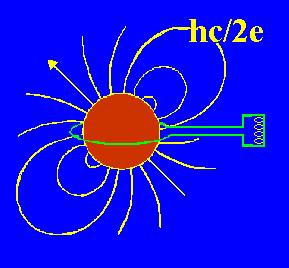
THE LENSE-THIRRING EFFECT

June 29 -- July 4, 1998
ICRA, University of Rome "La Sapienza"; ICRA Network , Pescara
The Lense-Thirring effect first pointed out by Lense (1917) and Thirring (1918) in connection with the precession of the orbital plane of an orbiting body around a rotating mass within Einstein's theory of gravity, then in its infancy, remains even today the source of a variety of fundamental theoretical and experimental/observational questions. This spin-orbital angular momentum coupling of the gravitational interaction is one of a number of related issues involving the behavior of test bodies around rotating masses which will be explored in this first ICRA workshop confronting theory with both experiment and observation in the spirit of the previous two meetings honoring Bill Fairbank.
This general topic which has come to be known as gravitomagnetism has seen considerable progress in its understanding over the years, but there is still much to learn. Falling under the wider umbrella of gravitoelectromagnetism, the analogy between the linear theory of electromagnetism and linearized general relativity which extends to the nonlinear regime through the introduction of test observer formalism, it has provided the stimulus to develop a clearer picture of the theoretical framework of extending space-plus-time language and concepts to strong field gravity. Among the novel ideas this has flushed out has been some of the interesting properties of noninertial forces like the centrifugal force within general relativity and related behavior of spinning test bodies. Although the orbits of nonspinning particles in the stationary geometries of neutron stars and black holes are rather well understood, we are still far from a complete understanding of the behavior of spinning particles in gravitational fields and of the implications of the different theoretical approaches to this problem. It is possible that analogies between the treatment in quantum and classical electrodynamics might lead to clarification of these issues.
After more than twenty years the Gravity Probe B project is finally nearing completion. Meanwhile evidence has been reported of possible observations and measurements of the Lense-Thirring effect by a satellite orbiting the Earth and in the strong gravitational fields of neutron stars and black holes. The current status of these experiments and observations will be reviewed critically and the merits if different approaches compared.
All those who have made major contributions to this field and are still with us will be invited to participate in the meeting. Its proceedings including both the participant talks and selected reprints from the past literature on the topic will be published in a book of the World Scientific series Advances in Astrophysics and Cosmology edited by Fang Li-Zhi and Remo Ruffini.
Topics will include the following:
International Organizing Committee:
Marek Abramowicz, John D. Anderson, Ignazio Ciufolini, Demetrios Christodoulou, Wei Cui, Thibault Damour, Francis Everitt, Leopold Halpern, I.B. Khriplovich, Robert Jantzen, Kenneth Nordtvedt, Hans Ohanian, R. Reasemberg, John Ries, Remo Ruffini (chairman), Luigi Stella, Aldo Treves
Local Organizing Committee:
Donato Bini, Sabrina Casanova, Gianluca Gemelli, Gianluca Israel, Andrea Merloni, Costantino Sigismondi (chairman)
Deadline for preliminary applications: April 30, 1998
Contact information:
Lense-Thirring Workshop
ICRA, Dipartimento di Fisica
UniversitÓ degli Studi di Roma "La Sapienza"
Piazzale Aldo Moro 5, I-00185, Roma, Italy
tel: + 39 6 499 14 397 fax: + 39 6 445 49 92
e-mail: fairbank@icra.it